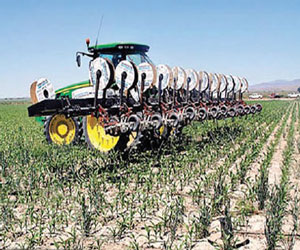
What is Drip Irrigation?
Drip Irrigation is the most efficient water and nutrient delivery system for growing crops. It delivers water and nutrients directly to the plant’s root zone, in the right amounts, at the right time, so each plant gets exactly what it needs, when it needs it, to grow optimally. It enables farmers to produce higher yields while saving on water as well as fertilizers, energy.
How does it work?
Water and nutrients are delivered across the field in pipes called ‘dripelines’ featuring small units known as ‘drippers’. Each dripper emits drops containing water and fertilizer, resulting in the uniform application of water and nutrients direct to each plant’s root zone, across an entire field.
Why do farmers prefer it?
Drip irrigation not only delivers greater ROI compared to other irrigation methods, it also gives farmers an efficient and simple way to operate their farms.
With drip irrigation, farmers are guaranteed:
Higher consistent quality yields
Huge water savings: no evaporation, no run off, no waste
100% land utilization – drip irrigates uniformly in any topography and soil type
Energy saving: it works on low water pressure
Efficient use of fertilizer and crop protection, with no leaching
Less dependency on weather, greater stability and lower risks
Why is it better for plants?
Crops need a consistent and balanced supply of water in order to grow. Drip irrigation applies water and nutrients frequently and in small doses, ensuring optimal growing conditions that help produce the highest yields possible.
Here’s why plants are more productive with drip irrigation:
High availability of water and nutrients
Doses of water and nutrients tailored to plant’s development needs
No saturation and good soil aeration
Avoids high salinity caused by excessive fertilizer application
No wetting of foliage that can result in fungal diseases
Source: https://www.netafim.com/en/drip-irrigation/

Write a Comment